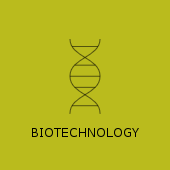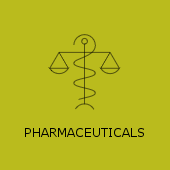df-mp is honored with two new stars: Audrey Nickel and…

Richard Page
Partner
Ph.D., M.Sc., B.Sc.
Dr. Page is authorized to represent clients before the European Patent Office and the Unified Patent Court (UPC). He has been active in intellectual property law since 2012 and complements our Biotechnology and Pharmaceuticals Division as European Patent Attorney.






Richard Page
Partner
Ph.D., M.Sc., B.Sc.
Dr. Page is authorized to represent clients before the European Patent Office and the Unified Patent Court (UPC). He has been active in intellectual property law since 2012 and complements our Biotechnology and Pharmaceuticals Division as European Patent Attorney.







practice areas.
Richard Page's scientific background lies in protein biochemistry, molecular biology, cell biology and neuroscience. Dr. Page specializes in opposition and appeal proceedings before the European Patent Office, in particular in the fields of biotechnology and pharmaceuticals. Dr. Page’s work also involves drafting and prosecuting European patent applications and advising international clients in life science patents.


admissions.
- European Patent Attorney
- Unified Patent Court (UPC) representative
AWARDS AND RECOMMENDATIONS.
- Author of scientific publications
- Winner of the Westminster Medal at the 2006 ‘SET for Britain’ competition, for using an invertebrate research model to mimic the effect of Abeta peptide accumulation in the brains of Alzheimer’s disease patients: https://www.scienceinparliament.org.uk/wp-content/uploads/2013/09/sip63-3-9.pdf
- In 2024, he was part of the df-mp team that received the prestigious award for ‘European Patent & Regulatory Team of the Year’ for the matter of Tecfidera versus generics.
curriculum vitae.
publications.
- Page RM, Münch A, Horn T, Kuhn PH, Colombo A, Reiner O, Boutros M, Steiner H, Lichtenthaler SF, Haass C. Loss of PAFAH1B2 reduces amyloid-β generation by promoting the degradation of amyloid precursor protein C-terminal fragments. J Neurosci. 2012, 32 (50):18204-14.
- Mitterreiter S, Page RM, Kamp F, Hopson J, Winkler E, Ha H-R, Hamid R, Herms J, Mayer TU, Nelson DJ, Steiner H, Stahl T, Zeitschel U, Rossner S, Haass C, Lichtenthaler SF. Bepridil and amiodarone simultaneously target the Alzheimer's disease β- and γ-secretase by distinct mechanisms. J Neurosci. 2010, 30(26): 8974-83.
- Page RM, Gutsmiedl A, Fukumori A, Winkler E, Haass C and Steiner H. APP mutants respond to γ-secretase modulators. J Biol Chem.2010 285(23): 17798-810.
- Fuhrmann M, Bittner T, Jung CKE, Burgold S, Page RM, Mitteregger G, Haass C, LaFerla FM, Kretzschmar H and Herms J. Microglia CX3CR1 knockout prevents neuron loss in an Alzheimer's disease mouse model. Nat Neurosci. 2010 13(4): 411-3.
- Rival T*, Page RM*, Chandraratna D, Sendall T, Lewis H, Ryder E, Rosahl T, Camargo LM, Shearman MS, Crowther DC and Lomas DA. Fenton chemistry and oxidative stress mediate the toxicity of the Aβ peptide in vivo. Eur J Neurosci.2009, (29)7: 1335-47. *joint first author
- Page RM, Baumann K, Tomioka M, Pérez-Revuelta BI, Fukumori A, Jacobsen H, Flohr A, Luebbers T, Ozmen L, Steiner H and Haass C. Generation of Aβ38 and Aβ42 is independently and differentially affected by FAD-associated presenilin 1 mutations and γ-secretase modulation. J Biol Chem. 2008, 283(2): 677-83.
- Crowther DC, Page R, Chandraratna D and Lomas DA. A Drosophila model of Alzheimer's disease. Methods in Enzymology. 2006, 412: 234-55.
- Crowther DC, Kinghorn KJ, Miranda E, Page R, Curry JA, Duthie FA, Gubb DC and Lomas DA. Intraneuronal Aβ, non-amyloid aggregates and neurodegeneration in a Drosophila model of Alzheimer's disease.Neuroscience. 2005, 132: 123-135.
- Lomas DA, Belorgey D, Mallya M, Onda M, Kinghorn KJ, Sharp LK, Phillips RL, Page R, Crowther DC, Miranda E. Polymerisation underlies α1-antitrypsin deficiency, dementia and other serpinopathies. Front Biosci. 2004, 1;9: 2873-91.
df-mp Patentanwälte Rechtsanwälte PartG mbB © 2025 df-mp in collaboration with Molnia Ho PartG mbB © 2025 df-mp.tech | Your partners for Patents. Trademarks. Designs. All Rights Reserved.
